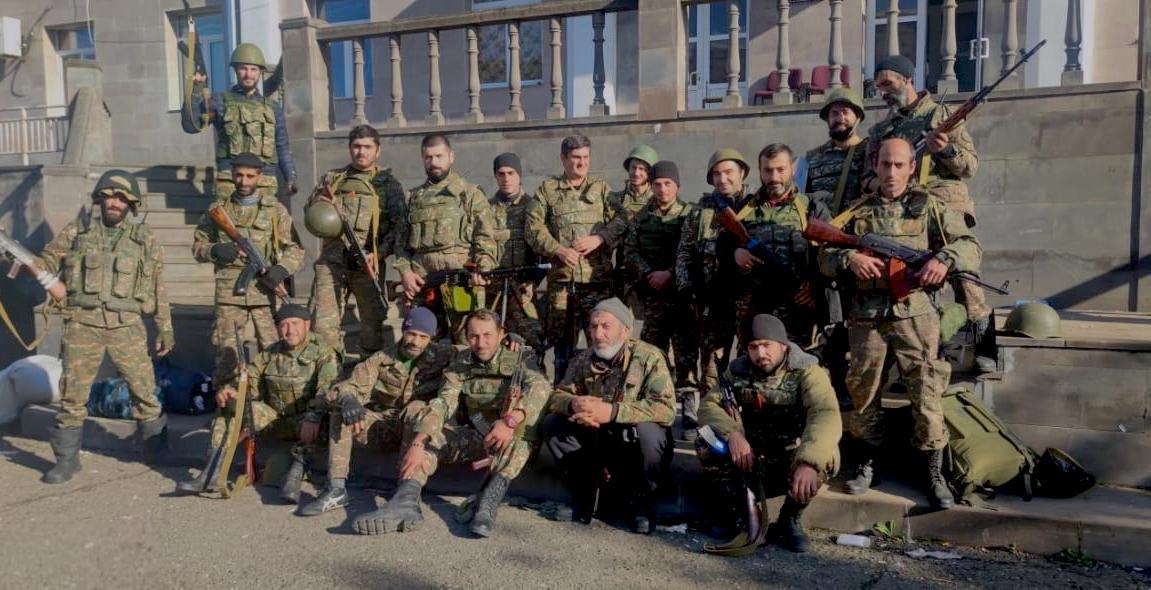
“Organized Disorder” – Reservist Davit Sargsyan Recalls Final Days of 2020 Artsakh War
Davit Sargsyan was a reservist tank soldier in the Armenian army when he volunteered to fight in the 2020 Artsakh war.
His recollections of the last days of the war paint a picture of disorganization and incompetence in the ranks of Armenian politicians and military officers tasked with defending Shushi, the famed Armenian fortress town, from advancing Azerbaijani military units.
After receiving twenty days of training, an 84-member combat battalion was mobilized and dispatched to Shushi on October 27. Sargsyan was a member of the battalion.
Sargsyan sat down with Hetq to share what he witnessed on the ground prior to the November 9 ceasefire.
He says the battalion never received any orders from the military brass and Artsakh President Arayik Harutyunyan was forced to step in and tell them what to do.
He says most of the battalion, sixty volunteers, refused to assume defense positions around Shushi and stayed in a local school
Azerbaijani advance units were reported in Shushi by November 5.
That night, after assessing the situation, the battalion and the local Shushi militia retreated to Stepanakert.
On November 7, the remaining group of sixty in Shushi also manages to get escape the Azerbaijani blockade.
Sargsyan says that to date he still doesn’t know who was responsible for organizing and running the defense of Shushi.
He says that the Armenian military command structure started to fall apart on October 27.
“There was no information on the location of the enemy, no plan of action or defensive tactics,” Sargsyan told Hetq.
He says there were Armenian forces stationed in all parts of Shushi, consisting of special units, units cobbled together from other forces, mobilized reservists and local militias.
“There were sufficient human resources to defend the city. But I cannot talk about the amount of military equipment. I know the air defense unit of Shushi was operating,” Sargsyan said.
These Armenian units, however, were left in the lurch. They had no specific orders and were unaware of each other’s presence.
It was such a situation that the Armenian forces didn't even know each other, they didn't know who was sitting where, what they should do.
On October 31, Sargsyan and other battalion members were sent to the Armenian village of Karin Tak, on the outskirts of Shushi, for a special operation. He says the defense of the village was as disorganized as that in Shushi.
Sargsyan says that confusion reigned in Shushi during the last few days before the ceasefire.
“Again, there was no city defense plan. We decided to explore the city and the positions by ourselves,” he says.
On the night of November 3, at 4 am, the Azerbaijani military targeted Shushi with an intense round of shelling. Armenian forces defending the town were immobilized.
“I had the impression that our artillery wasn’t working,” Sargsyan says.
Artsakh President Arayik Harutyunyan visited the mobilized volunteers on November 4, promising to provide necessary military equipment and to correct gaps in the command structure.
“We were told that a breakthrough would be made the next day. We later learnt that Karin Tak had been captured,” Sargsyan says, adding that he and his comrades asked themselves if they couldn’t trust Harutyunyan, what were they doing there.
Sargsyan and his unit were told to occupy the positions in the south-eastern and eastern part of Shushi so that Azerbaijani forces could not gain access from the Hounot gorge.
Sargsyan paints a disturbing picture of what he saw those last few days.
Any semblance of an organized defense was absent. Armenian defenders of Shushi had no connection with the military command.
“I didn't see any army formations, let alone an action. One or two mortar rounds at most,” says Sargsyan who was part of the Berd-2 (Fort-2) defense unit.
Running low on ammunition and without any trench cover, Sargsyan’s unit joins up with defenders from the nearby Berd-2 unit.
“Seeing that the city was being bombarded both by our and the enemy's forces, and that there was no contact with anyone, we decided to retreat to the Shushi-Stepanakert Road, dividing into two groups.”
The November 9 ceasefire came as a surprise to Sargsyan and his comrades who had left for the village of Shosh to get their military orders. No plan to defend Stepanakert, the capital of Artsakh, had been drafted.
“It was organized disorder. An imitation of war, which, thanks to the courageous feats of our boys, was prolonged for 44 days.”
 Videos
Videos Photos
Photos
Write a comment